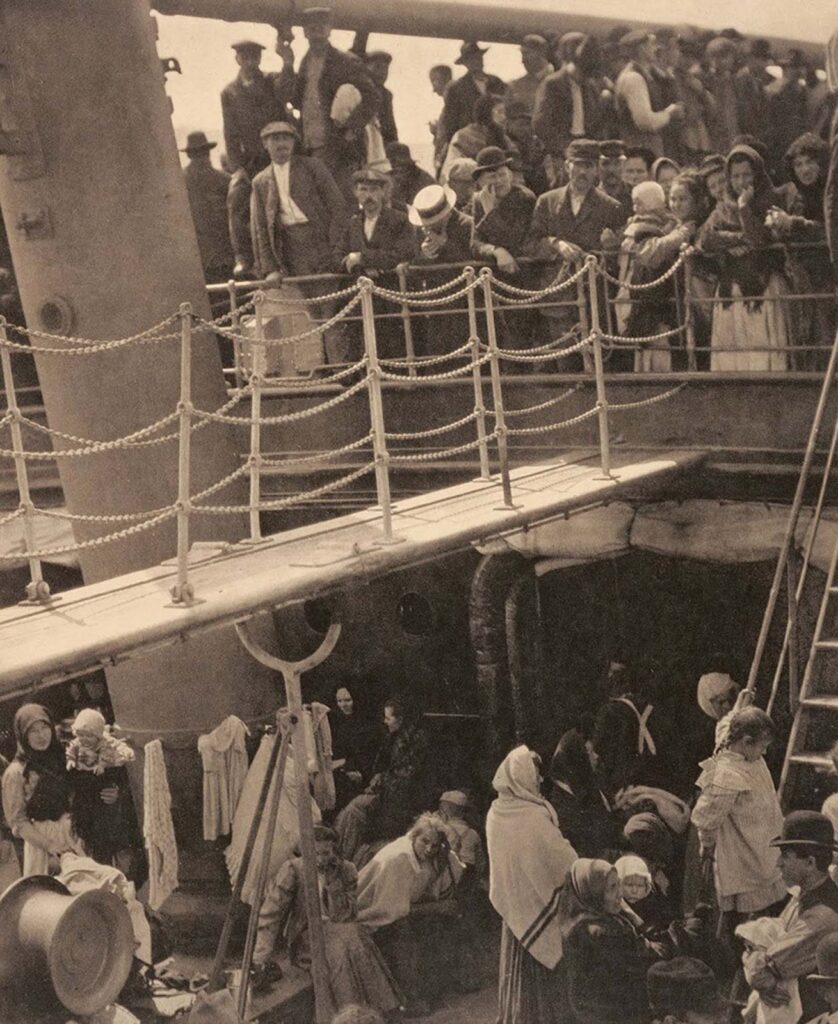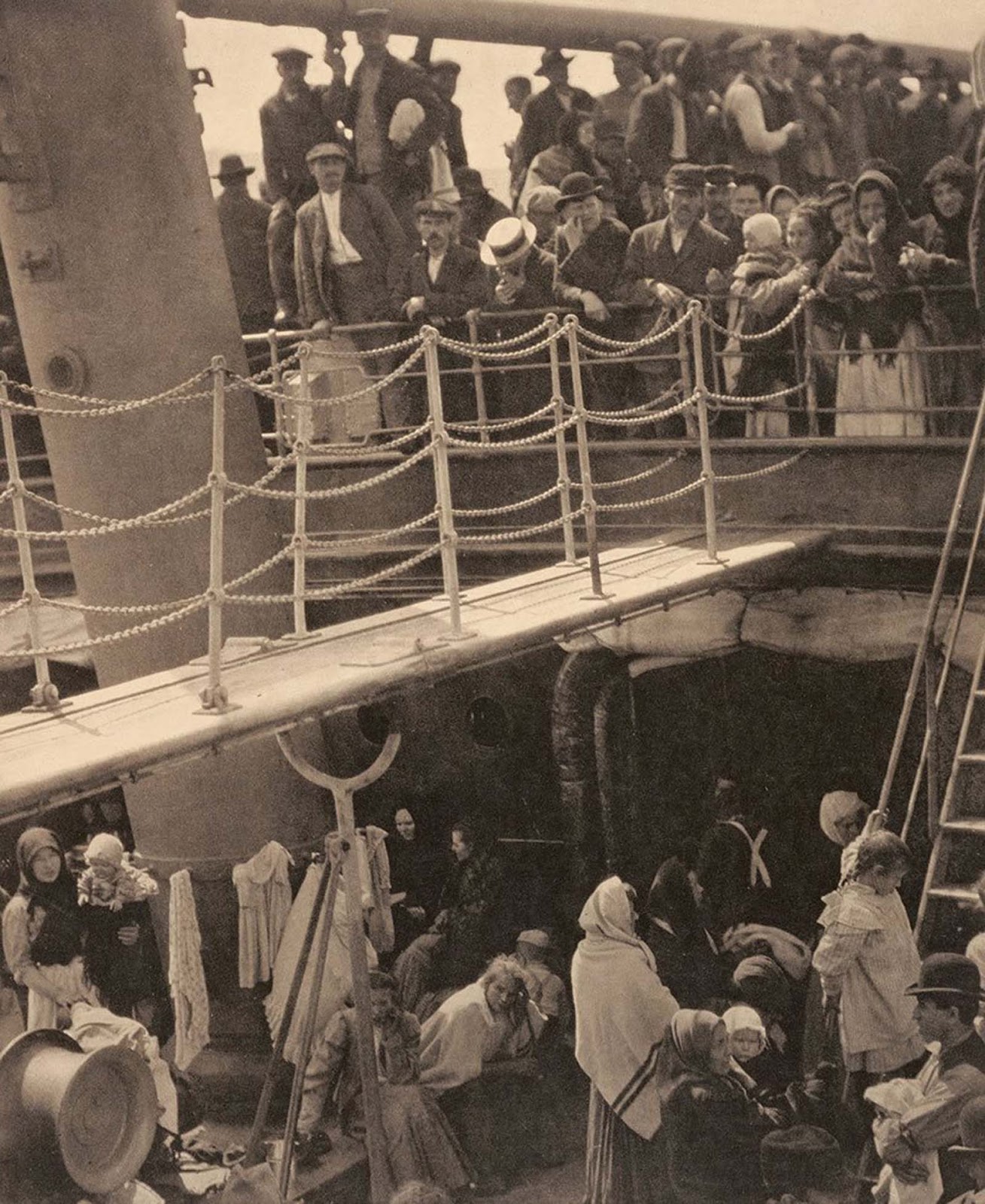
 As a leader of the Photo-Secession movement, Alfred Stieglitz searched for beauty through the craftsmanlike creation of photographs, held pioneering exhibitions of his contemporaries, published their works and sought to have the still nascent art form taken as seriously as painting.
As a leader of the Photo-Secession movement, Alfred Stieglitz searched for beauty through the craftsmanlike creation of photographs, held pioneering exhibitions of his contemporaries, published their works and sought to have the still nascent art form taken as seriously as painting.
But as modernism seeped into the cultural ferment in the early 20th century, Stieglitz became mesmerized by the growing cacophony of society, of rising skyscrapers and soaring airplanes, and strove to create what he termed “straight photography,” offering truthful takes on the real world.
In 1907 he was sailing to Europe, 4×5 Speed Graflex in tow, when he set off from the first-class deck and came upon the huddled masses in the ship’s steerage.
There, the shawled and swathed were crammed together on the compact lower deck, the skewed geometry of the ship emphasizing their claustrophobic accommodations and visually segregating them from those on the upper deck. “A round straw hat; the funnel leaning left, the stairway leaning right; the white drawbridge, its railings made of chain,” Stieglitz later wrote.
“I stood spellbound for a while. I saw shapes related to one another—a picture of shapes, and underlying it, a new vision that held me.” Despite its momentary impact, Stieglitz’s photo, with its clear, unapologetic take on life, lay unnoticed for four years.
But when he published it on the cover of his magazine Camera Work, The Steerage presented a radical way of thinking about photography, not as a momentary mimic of painting but a wholly formed and unique type of art.
Appearing at the time of a seismic revolution in the arts, with the emergence of such seminal figures as the composer Igor Stravinsky and the architect Walter Gropius, this, one of the first “modernist” pictures, helped photography to be seen on a par with these other innovative forms of art.
None other than the painter Pablo Picasso admired The Steerage’s cubistic sense and wrote that both he and Stieglitz were “working in the same spirit.”